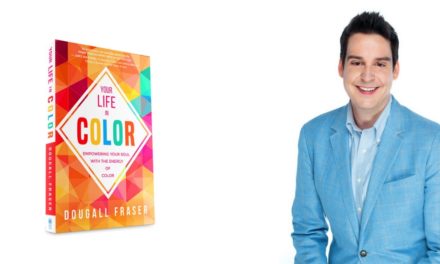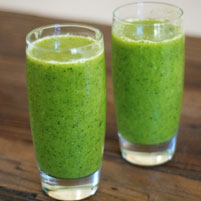With the heat of summer upon us, proper hydration is essential for sports and fitness performance. The cooling of elevated core temperature during exercise results in fluid loss in the form of sweat on the skin’s surface. It is a natural and healthy response to rising body temperature. As a general rule, the more fit we become the more we sweat as our body becomes an efficient cooling machine.
We must replace the lost fluids from sweating during exercise to
– maintain proper body temperature
– lubricate the joints
– transport nutrients to the tissue
– rid the body of toxic waste built up during exercise
Along with water, sodium, potassium and other electrolytes are lost from the body in this process. Replacing lost fluid and electrolytes is the key to peak performance, endurance and injury prevention.
The big questions are, what, how much and when should we be drinking?
What to drink.
Water and electrolyte replacement has become big business. Walk into any fitness center, supermarket, convenience store or gas station and you will find a dizzying array of specialty waters, sports and energy drinks and electrolyte replacement solutions. How do you choose? Do you really need these expensive drinks? Here’s the scoop.
Extensive research has shown that water is all you need for any exercise activity lasting less than one hour. Our diets provide enough carbohydrates, sodium and other electrolytes such as potassium and magnesium to counter any loss for that duration.
After one hour of exercise, electrolytes do need to be replaced, especially sodium, as well as carbohydrates for energy requirements, hence the marketing and draw of sports and energy drinks, which contain sodium and sugar. The salt and sugar in these drinks also increases thirst, which encourages you to drink more.
Bottled sports drinks are great in a pinch but with a little foresight and planning you can make your own for pennies without the artificial taste and color. When you take the time to put it in a reusable container you help the environment, too.
Sports Drink Recipe:
1 Qt. Water
1/3 tsp salt
½ to 1 ½ tsp. sugar
½ cup of 100% grape juice for flavor (optional if you need a fruity taste)
Do not use citrus juices as they can cause gastric upset.
Do not use artificial sweeteners. The sugar is a necessary component of replacing carbohydrates, the stuff that fuels exercise. If you are diabetic consult your doctor on this matter.
When and How Much to Drink
We all sweat at different rates, so these are general guidelines for fluid replacement before and during exercise.
According to the American College of Sports Medicine, drink 2- 3 glasses of water 2 hours before exercising and another glass 15 minutes before exercising.
During rigorous and intense activity, 8 oz. of fluid should be replaced every 10-15 minutes with a sports drink added after 45 -60 minutes. Modify this for less intense activity.
Drink with big gulps instead of sips, as this causes the stomach to empty of the fluid quicker and get to the tissue where it is needed.
Keep your water and /or sports drinks at 41-59 degrees F. Fluid is absorbed by the body faster at these temperatures so make sure you keep drinks out of the hot sun of your car.
Don’t wait for your body to send an SOS signal that you’re going down!
Too often we are encouraged to push ourselves to the limit as if it will give us more endurance, strength and power. Nothing could be further from the truth. Being properly hydrated adds to your endurance and strength and prevents fatigue that can lead to injury. Dehydration can have dire consequences, especially in the heat. Without proper fluid levels we are unable to release the heat of elevated core temperatures through sweating and run the risk of heat stroke. Please make sure that anyone who is training you also follows this hydration protocol. You should have the freedom to stop and take a drink during any fitness class, boot camp and training session. Drink extra if the class is outdoors in the hot sun. Make sure your kids are offered this option as well at summer camp and sports practice. The philosophy of some coaches to make a better athlete out of suffering is antiquated and dangerous. It only takes a 2% fluid loss for the body to begin showing signs of dehydration and have fitness performance greatly hampered.
Here are some but not all of the symptoms of dehydration. Get to know the signs for yourself and others so that you can be of assistance in an emergency.
2% Fluid Loss
Stop exercise. Rehydrate. Can return to exercise.
-Thirst
-Dry Mouth
-Dry Skin
-Weakness/Chills
-Dark Colored Urine
5% fluid Loss
Stop Exercise. Rehydrate. Do not continue exercise. Seek medical attention if symptoms don’t subside.
-Increased Heart Rate
-Increased Respiration
-Increased Body Temperature
-Decreased Sweating
-Muscle Cramps
-Nausea
10% fluid loss- Call 911 -immediate medical attention vital!
-Muscle spasms
-Labored breathing
-Shriveled up skin
-Vomiting
-Confusion
-Chest Pain
-Abdominal Pain
On the flip side, hyperhydration or too much fluid replacement for your body’s requirements, is a possibility and can be just as dangerous and life threatening as dehydration. Ingesting too much water in a short amount of time dilutes electrolyte levels throughout the body. This is a real problem for endurance athletes who participate in marathons, triathlons and ironman competitions. The symptoms can be very similar to dehydration such as dizziness, lethargy and confusion. This is why it is essential for endurance athletes to drink sports drinks during training and races.
If you participate in endurance races don’t go it alone. Hire a trainer specific to your sport that can teach you what and when to drink and eat for the race and conditioning sessions.
The best advice for the average fitness buff is to listen to your body and learn its cues. Rehydrate often and when thirsty if exercising for an hour or so.
So, drink to your health, your fitness health that is, for optimal strength, power and endurance!





 Hi I’m Catherine, founder of Wine Women And Chocolate. Want to become a contributor for Wine, Women & Chocolate? Interested in sharing your unique perspective to a group of supportive, like-minded women?
Hi I’m Catherine, founder of Wine Women And Chocolate. Want to become a contributor for Wine, Women & Chocolate? Interested in sharing your unique perspective to a group of supportive, like-minded women?